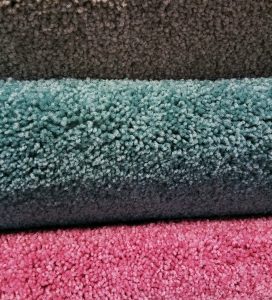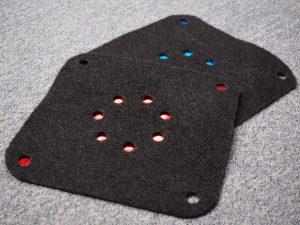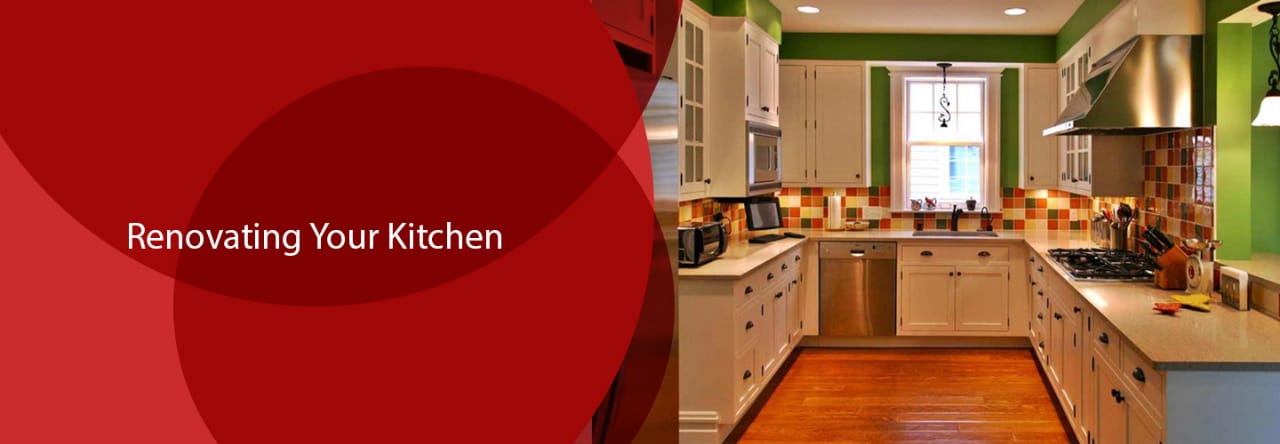Table of Contents
How to install carpet padding is easy yet tedious. To simplify the process, we have created an easy guide for you.
You can do your carpet padding or hire someone to do it. However, if you know how to install carpet padding, you will save some money and learn a skill.
Furthermore, if you want to install it on your own, we will share a few easy steps to help you with the process.
Why carpet padding is important?
Carpet padding helps to last the carpet longer, adds comfort while walking, reduces noise, and provides insulation. When installing a new carpet, you need to install a new carpet padding.
Moreover, carpet padding and carpets come in a fixed size. Hence it depends on your room size; you might need to lay more padding pieces in the room. Also, the place where two pieces of padding meet are called seams.
How much it will cost?
Generally, they are sold in a roll that contains about 270 sq. feet of carpet padding. The price starts from $60, which means $.22/ sq. foot, and can go up to $500, which means $1.85/ sq. foot.
Moreover, the inexpensive carpet padding has a density of about 5, whereas the expensive one has a thickness of 10. Remember it is better to go for the costly carpet pad as sometimes low-quality ones can have small bumps, making your carpet uneven.
Furthermore, good quality padding can make your budget carpet look better, and the carpet will be more durable.

7 Types of Padding
Here are some types of carpet padding that you might try installing:
1. Flat Rubber Padding
Flat Rubber padding is also called slab rubber carpet pad, and it is a phenomenal product. They will last through two sets of your carpet and will still look like you haven’t used it.
But this high-quality carpet pad is expensive. They will cost you more than $350. Also, the manufacture produces a variety of products with different types of firmness and density.
2. Felt Padding
They are also known as jute, synthetic felt, fiber cushion, or fiber pad. You can find both natural fibers as well as synthetic. Most manufacturers use synthetic felt as it is better than natural fibers. Natural fibers are mostly made of jute and animal hair, and they can mold easily.
At the time of manufacturing acrylic fibers, polyester, nylon, and polypropylene get needle-punched to make dense padding. Most of the time, this density is in ounces. Again, you might see them in pounds depending on the area covered by the carpet.
You need to select one with a minimum of 30 ounces, and the thickness should be about 3/8 inch. However, 40 ounces or 7.5 pounds is the best.
It is firm but not spongy. Due to this, they are best for Berber carpets or carpets that have specifically mentioned using a felt pad. However, for other varieties of carpets, a felt pad is not a good option.
Usually, they are a good option for the house which has radiant hear, however, contact the company to be sure of it.

3. Rebond padding
They are also known as bonded urethane or bonded polyurethane and are probably one of the best options for carpet padding for your home. It is because it is comparatively cheaper but also durable. However, you need to buy one which has good density.
Also, do not get rebond pads if the carpet warranty specifically says to use different padding as it will not work.
Furthermore, this padding is made by leftover high-density urethane or polyurethane foam. They collect these foam from different industries such as mattresses, furniture, etc. The manufacture will chop them into tiny pieces and then bind them with chemical adhesive.
Moreover, the density range of these padding ranges from 5 – 10 pounds. You can buy a rebond padding with a 6.5-pound density. However, if you live in a heavily trafficked area when buying a rebond pad with an 8-pound density.
4. Prime Polyurethane Padding
It is made with 2 liquid items, and it creates a foam-like substance that is later sliced for carpet padding. Moreover, it is a little firmer than those foams used for car seats or upholstered furniture.
Also, these are better if you live in a low-traffic zone. Get one that has a minimum of 3 pounds density.
5. Frothed Foam Padding
It is another type of padding which is very durable. It is quite similar to prime polyurethane padding, but it includes some non-woven substance attached by a carpet-backing machine.
Even though it is one of the most costly carpet paddings, when you change your carpet, you do not need to change the pad if you use it for the first time.
6. Memory Foam Padding
They are like frothed foam pads, but another element is added to have that memory foam feel. Moreover, if you have a memory foam mattress, you know that it is extremely comfortable and soft. Hence memory foam padding will make your carpet very soft, and you will feel comfortable when you walk on them.
But one of the downsides of memory foam pads is that they will get squished after some time, and if you constantly stretch your carpet, it will damage the carpet after a few years. Hence, if you live in a high-traffic area, you should not use memory foam padding.
7. Waffle Rubber Padding
They were very popular in the 70s and 80s, but people still use them. It is made of synthetic or natural rubber and looks like a waffle.
These carpet pads have a high proportion of air, and thus it feels soft when you step on them. However, due to this, they are not as durable as rebond padding.
But they are of high quality, and if you buy one with high density, it will last you for a long time.
Moreover, the best density for waffle rubber padding is 90 ounces. However, if you live in a low-traffic area, you can also have one with 64 ounces but not lower.
How to install carpet padding
Here are six easy steps to install carpet padding:
1. Measurement of the Room
The first step on how to install carpet padding is to take a precise measurement of the room. First, you need to measure the width and length of the room and then multiply it together to know the square footage.
Moreover, carpets are measured in square yards. So, 1 square yard is equal to 9 square feet. Hence to change from square feet to square yards, you need to divide the square footage by nine. For example, 900 square feet/9 = 100 square yards.
Furthermore, once you know, it orders your carpet. Make sure you order at least 20% more than what you need. Also, you need other tools such as adhesives, edging, and tack strips.
2. Set up the Subfloor
You need to prepare your subfloor before the installation. Few things you need to do:
- If there is any existing flooring or carpet, you need to remove it.
- Vacuum the subfloor thoroughly. Moreover, the subfloor needs to be level, dry, clean, and not damaged or crack. If there is damage, you need to repair it before the installation.
- Remove all the doors that open inside the room, including closet doors.
- If you are changing your old wall-to-wall carpet, the baseboards can be in place. However, if it is another type of installation, you have to remove the baseboards.
- Reinstall the baseboards after or before the installation of the carpet.
- Also, check what the carpet manufacture has suggested for the mounting baseboard. Most recommend installing it before and leaving 2 – 3 cm above the subfloor.

3. Carpet Tack Strips
This is the third step on how to install carpet padding. You need to set the carpet tack strips:
- Either use snips or a small hand saw to cut the carpet tack strips so that they can fit the edge of your room.
- Then position these strips with tack points that will face the wall.
- Add the tack strips around your door frame. Do not place them at the opening of the door. These strips are sharp, and you do not want to step on them.
- Between the tack strips and wall, you need to keep some space. The space should be 2/3 the thickness of your carpet.
- Nail these strips on the subfloor. Also, if your floor is made of concrete, then use either epoxy adhesive or masonry tacks to attach them to the floor.
4. Install Carpet Padding
At this point, you need to install the carpet padding:
- First, you need to lay the carpet pad on your subfloor. If you are using more than one padding, the seams should be at a 90-degree angle. Hence when you apply the carpet over it, the seams of the carpet have to be perpendicular to the padding’s seams.
- Use either a utility knife or carpet trimmer to cut the pad so that it can fit the length of your room. Also, the edge of the pad should be against the edge of the strips.
- Tape all the neighboring pieces with 2 – 3 inches of tape. Moreover, the carpet pad needs to cover all the areas you plan to have a carpet on.
- Then it would help if you used a staple hammer so that the pad and the edge of these tack strips stick together.
- Also, at the seams, staple the pad.
- However, if you want to know how to install carpet padding on a concrete floor, it’s best to use carpet adhesive or ask the manufacturer what to use.
5. Trimming
- First, you need to cut your pad and then install it roughly.
- Once you install it, there might be a few places where you need to trim the carpet pad.
- Use a carpet trimmer to cut the edges. A carpet trimmer will make your job much neater and easier. However, any sharp blade can do it as well.
- Also, the pad should be a few centimeters away from the strips. When you stretch your carpet, the pad does not ride up on the strips. If it rides up, then you can install the carpet properly.
- All the pieces of carpet padding should stick together when you lay them rather than being on top of one another. For maximum comfort and durability, you should ensure one carpet is not above another.
6. Secure it on the Subfloor
- The last step on how to install carpet padding is to either glue or staple it on the subfloor. Also, if you plan to staple the carpet padding, then only give a 5 – 6 inches gap between each other.
- You can buy a tacker to make the work very easy and efficient than a traditional staple gun. But if you do not have a tacker, then a staple will also do the job.
- However, if you want to use glue, you need to use a low volatile organic compound (VOC) glue. Use VOC glue so that you do not pollute the indoor air and ensure the room is ventilated. Keep in mind that if you are doing it on a cement floor, your only option is adhesive.
- If you install the carpet, make sure you collect trash or scraps that might be on the pad. Small scraps might cause bubbles and bumps in your carpet after installing it.

Final thoughts
Even though it requires a lot of time, carpet padding installation is easy. Also, the more you do it, this will get easier. We provided 9 easy steps on how to install carpet padding, which will help you do it if it’s your first time.
Moreover, there are a few specialized tools that you need. However, they are inexpensive and easily available.




